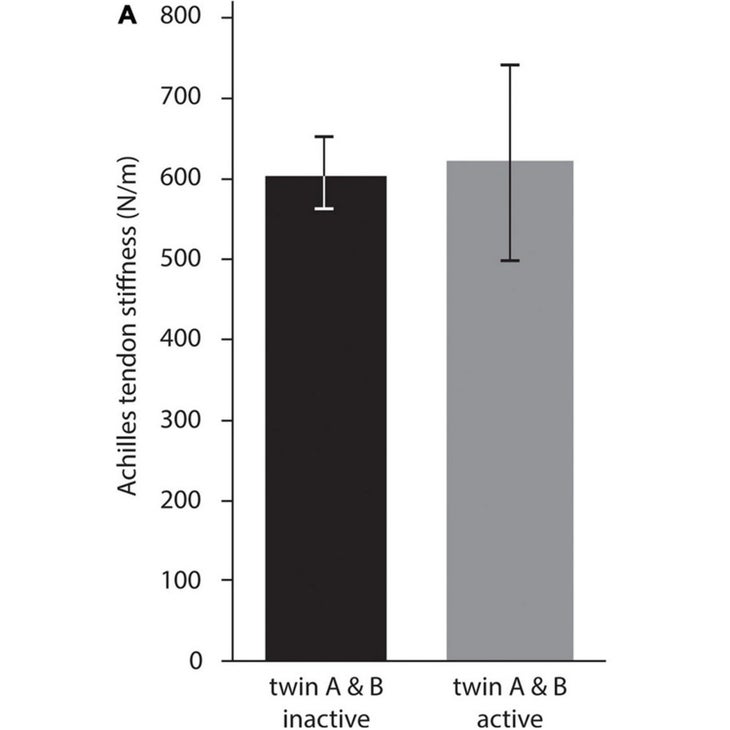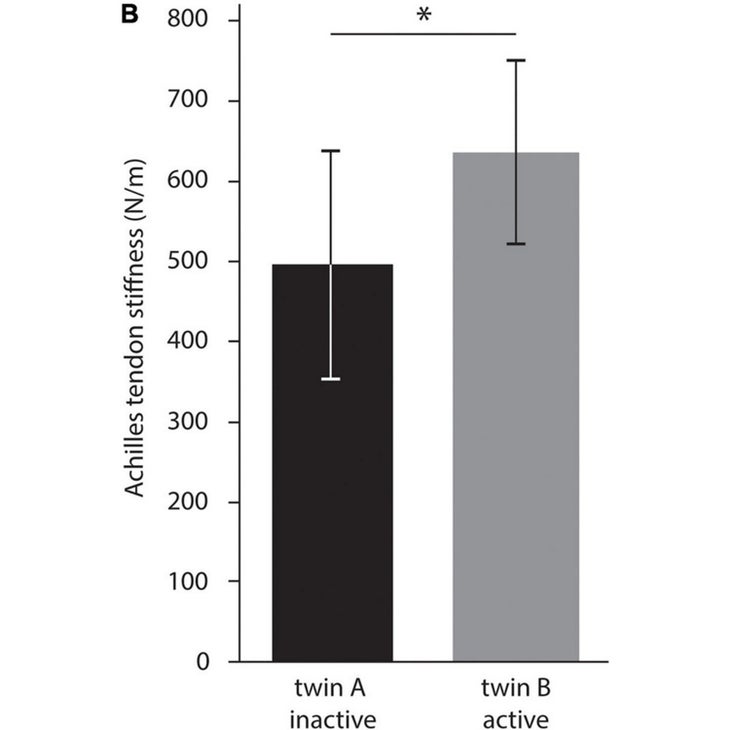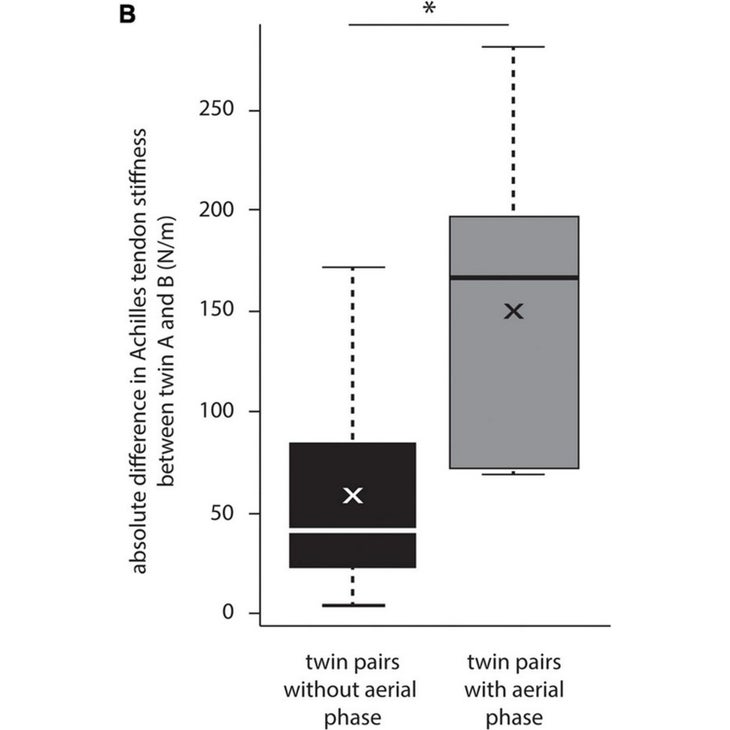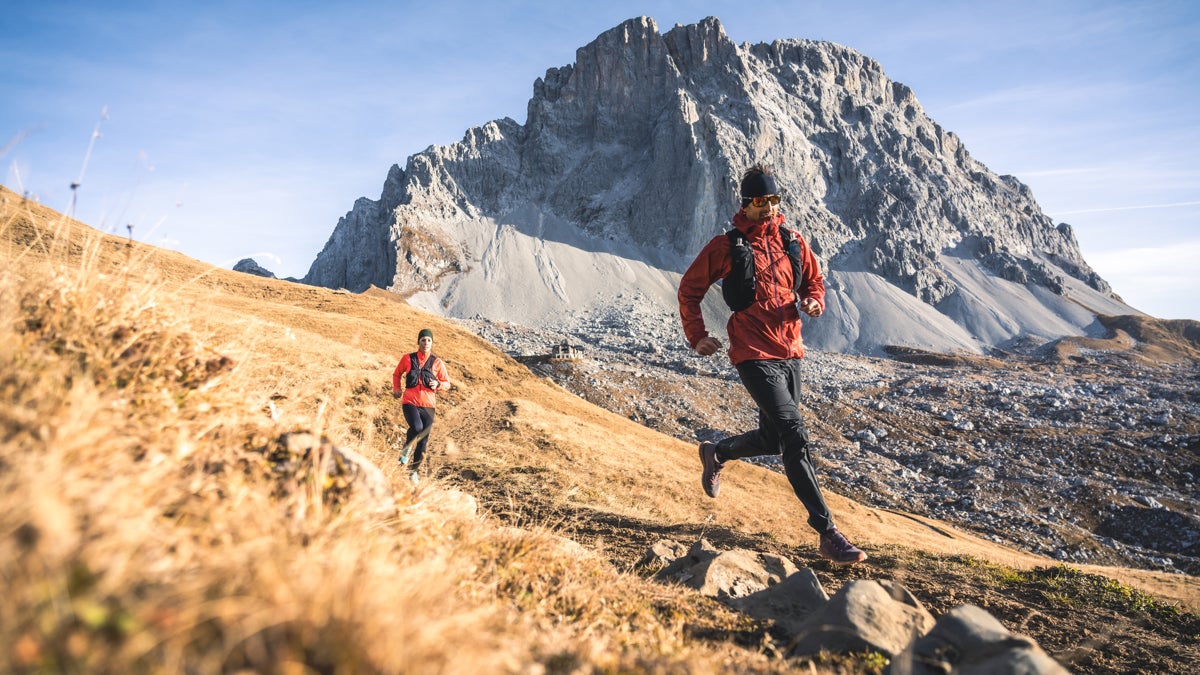No products in the cart.
Outdoor Adventure
Yes, You Can Train Your Tendons
Receive $50 off an eligible $100 purchase at the Outside Shop, where you’ll find a selection of brand-name products curated by our gear editors, when you
sign up for Outside+ today.
A decade ago, Danish scientists collected samples from the Achilles tendons of 28 cadavers of various ages and measured the amount of radioactive carbon-14 in them. Above-ground nuclear tests in the 1950s and 1960s temporarily raised levels of carbon-14 in the atmosphere, which means that the amount found in any living tissue reveals when that tissue was actively growing or repairing itself. The results showed that the core of the tendon was formed in the first 17 years of life, after which it became basically inert.
This picture of a seemingly lifeless tendon—a rubber band that connects your calf muscles to your heel bone—is worrying for two reasons. One is that a lot of runners develop chronic Achilles tendon injuries, and they would really like to believe that it’s possible for tendons to repair themselves. And there are, indeed, some researchers who now believe that an appropriate combination of rehab exercises and targeted nutrition can trigger tendon healing.
The second reason is that the properties of your Achilles tendon seem to be associated with performance, and more specifically with how efficiently you run. For several decades now, there has been speculation that one of the secrets to the international dominance of Kenyan runners is their uniquely long and springy Achilles tendons. Comparisons of trained and novice runners also turn up differences in tendon thickness, stiffness, and structure. A longer, stiffer tendon can store more energy as it’s stretched with each stride, then release that energy as you toe off. What’s unclear is the extent to which these differences are born or the result of training.
That’s what makes a new study in Frontiers in Physiology, from a research team in Germany led by Freddy Sichting of the Chemnitz University of Technology, particularly interesting. Sichting and his colleagues rounded up 40 pairs of identical twins, and had them fill out a questionnaire about their physical activity and sports habits, classifying each person as active or inactive based on a threshold of one hour of training per week. Then the researchers measured the stiffness of their Achilles tendons using a handheld device that basically rings your tendon like a bell and measures its vibrations.
On the surface, the results might seem a little underwhelming. If you compare sets of twins who are both active to pairs who are both inactive, there doesn’t seem to be any difference in tendon stiffness. Here’s what that looks like:

But the picture changes if you look only at pairs where one twin is active and the other is inactive. In this case, the active twins have tendons that are 28 percent stiffer:

Given that identical pairs start with identical genes, this is compelling evidence that long-term training does change the structure of the Achilles tendon, and it fits with previous studies that have found thicker and stiffer tendons in trained runners. These were not elite athletes, so superhuman training levels weren’t required to change the tendons. That said, the active subjects had been participating in their main sport for an average of 15 years, so they had plenty of time to adapt.
The reason differences only show up when you compare identical twins is that the variance between twin pairs is much bigger than the variance within twin pairs. Training matters, but genes definitely matter too. That’s also highlighted by another recent study, from an international team headed by Victoria University’s Nir Eynon, which added to evidence that certain gene variants make you more susceptible to tendon injuries. For example, versions of a gene called COL5A1 are thought to alter the structure of the collagen fibrils that make up tendons and ligaments.
There’s one other insight from Sichting’s study. They divided the reported exercise activities into those that involve an aerial phase with both feet off the ground (like running, basketball, or tennis) and those that don’t (like cycling, swimming, and walking). The twins who participated in sports with an aerial phase had much stiffer Achilles tendons that those who were active in non-aerial sports, which suggests that jumping and landing are key triggers of adaptation:

I’d love to wrap this up with Three Simple Exercises to Boost Efficiency and Injury-Proof Your Achilles. (Imagine the clicks!) The truth is that there’s still a lot of confusion and disagreement about exactly how tendons respond to different types of training, what role they play in running efficiency, and why they get injured. But the crucial point is that those Danish cadavers weren’t telling us the whole story. Maybe they simply weren’t active enough as adults to stimulate tissue renewal. Tendons are undoubtedly slow to adapt, but they’re not inert rubber bands—and the more we learn about how to train them, the less likely they are to become your Achilles’ heel.
For more Sweat Science, join me on Twitter and Facebook, sign up for the email newsletter, and check out my book Endure: Mind, Body, and the Curiously Elastic Limits of Human Performance.

